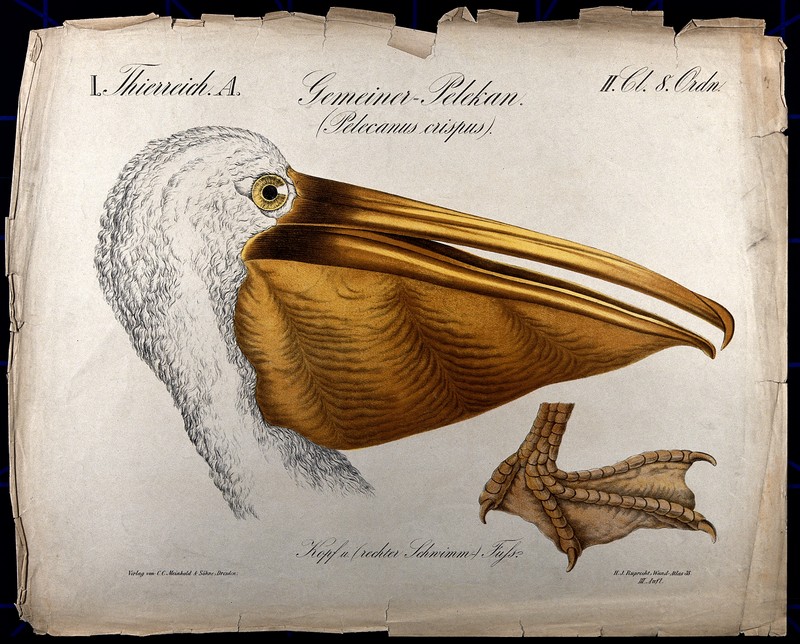|
| Query: bird | Result: 1955th of 32675 | |
Dalmatian pelican (Pelecanus crispus)
| Subject: | Dalmatian pelican (Pelecanus crispus)
| | Poster: | Wiki Photos (---@---.---)
| |

| Resolution: 3287x2648
File Size: 3378554 Bytes
Upload Date: 2018:09:25 11:51:14
|
Title Head of a pelican, with a detail showing the foot. Iconographic Collections
Full Bibliographic Record: http://catalogue.wellcomelibrary.org/record=b1579063
Source: https://commons.wikimedia.org/wiki/File:Head_of_a_pelican,_with_a_detail_showing_the_foot._Wellcome_V0023358.jpg
The Dalmatian pelican (Pelecanus crispus) is the most massive member of the pelican family (Pelecanidae), and perhaps the world's largest freshwater bird. Dalmatian pelicans are elegant soaring birds, and their flocks fly in graceful synchrony. Pelecanus crispus is a short to medium distance migrant between breeding and overwintering areas.
|
Comments |
|---|
| | Guest |
|
Scientific Name: Pelecanus crispus Bruch, 1832
Common Names:
English – Dalmatian Pelican
Spanish – Pelícano Ceñudo, Pelícano Rizado
Distribution:
Breeds in SE Europe (Serbia and Montenegro S to Greece, E to S Ukraine and S Russia) and E in Asia to Kazakhstan and W Mongolia, and also, in S, in W & NE Turkey, Azerbaijan, Iran and W China (Xinjiang). |
^o^
Animal Pictures Archive for smart phones
^o^
|
|
|